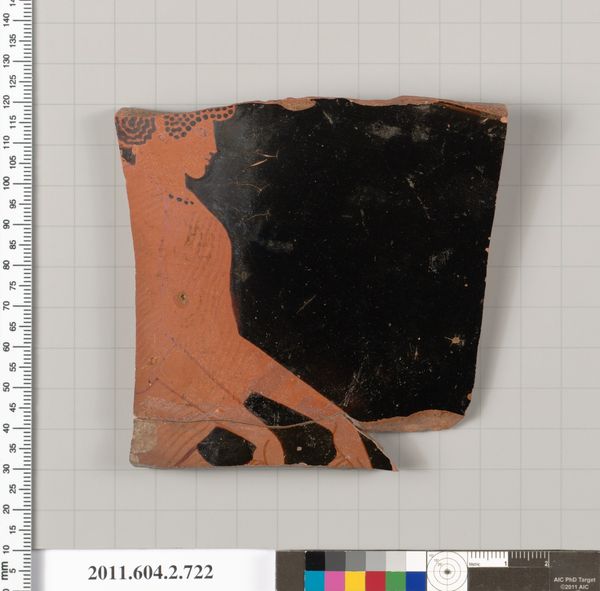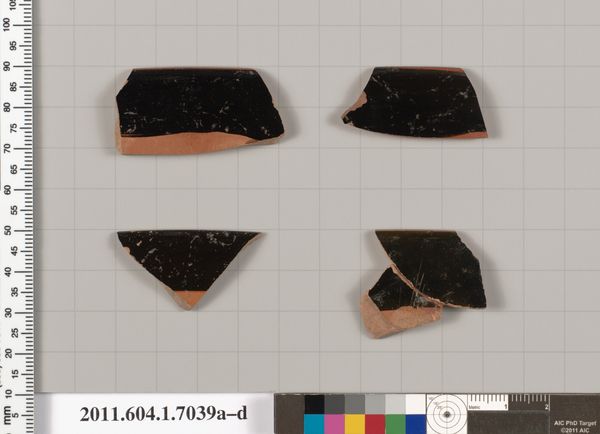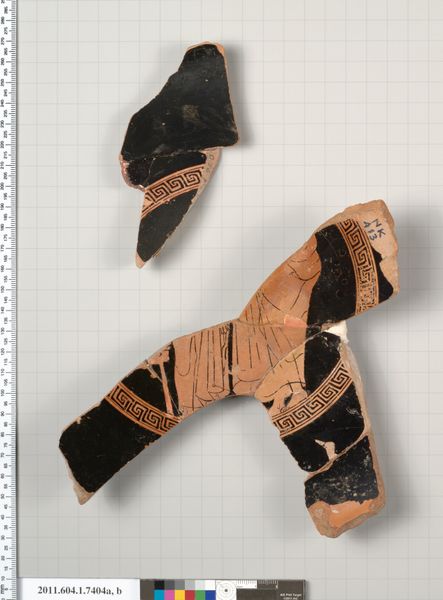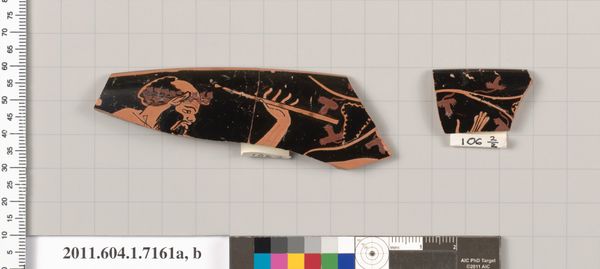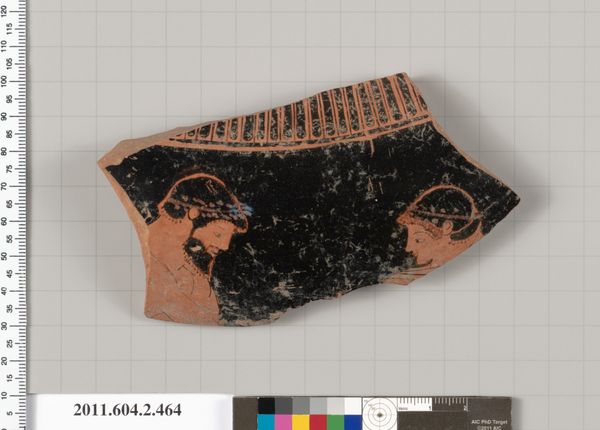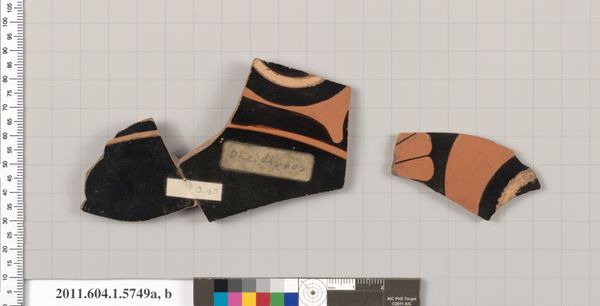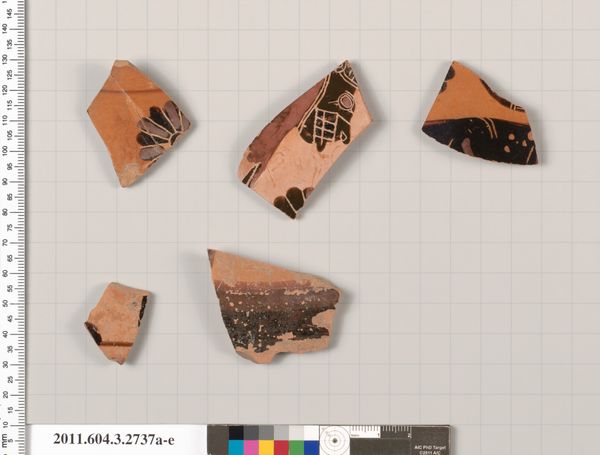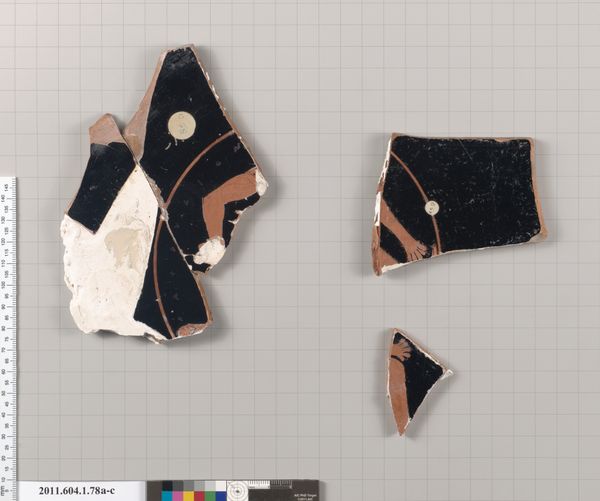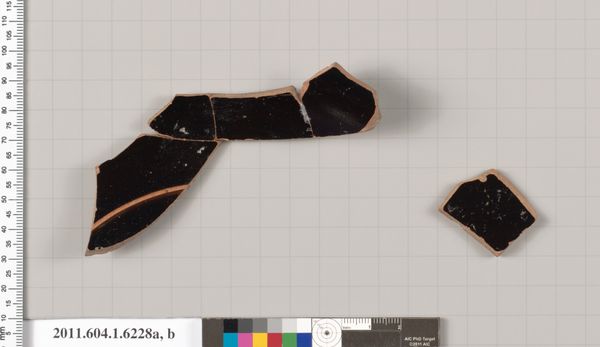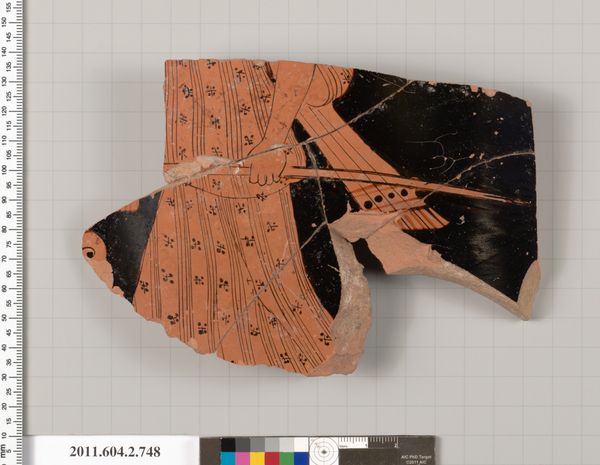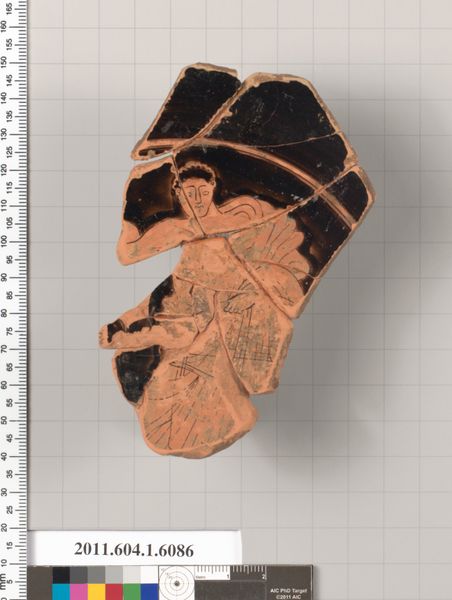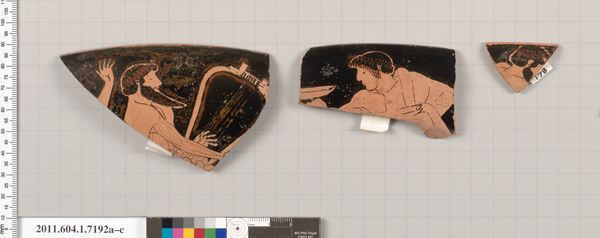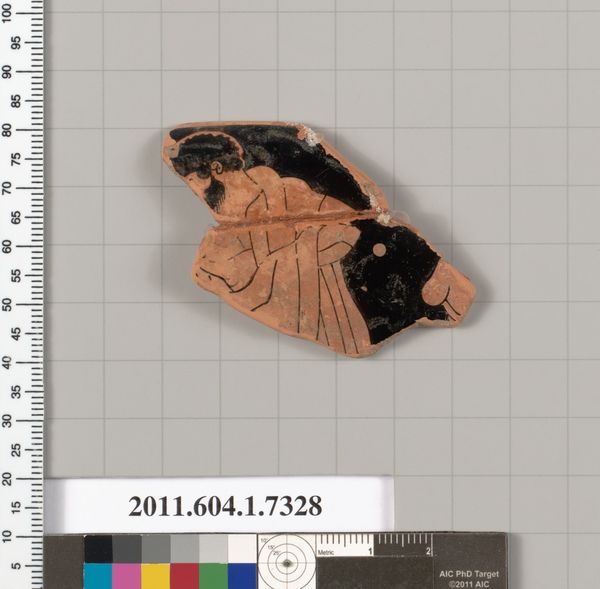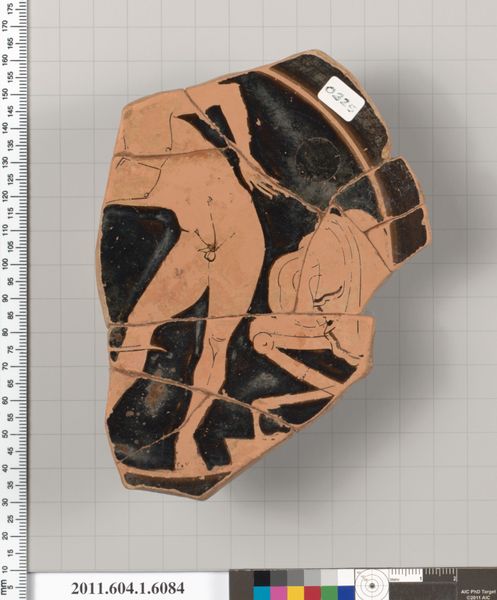
drawing, ceramic, terracotta
#
portrait
#
drawing
#
greek-and-roman-art
#
ceramic
#
figuration
#
ancient-mediterranean
#
terracotta
Copyright: Public Domain
Editor: Here we have fragments of a terracotta kylix, or drinking cup, dating back to 530 BC, attributed to the artist Makron. These pieces are currently held at the Metropolitan Museum of Art. Looking at them, I’m struck by how delicate the figures seem, even in these broken remnants. What can you tell me about how the artist uses form to create meaning? Curator: Observe the stark contrast in the black-figure technique. Notice how the artist utilizes this binary—black against the natural terracotta—to define form. What emerges from this stark contrast? Editor: Well, the figures stand out clearly. The black silhouettes have this very defined shape that allows you to discern their form easily against the clay. It emphasizes their contours and positions, even in these small pieces. Curator: Precisely. Consider the line work; see the detail in the incised lines that define musculature, drapery, and facial features. It's this detail within a formalized structure that grants each figure, each fragment, a sense of potent presence. Now consider the curvature inherent in the kylix’s original form: how does that inform your perception? Editor: The curve probably warped the figures in a subtle way. Knowing it was a drinking cup does affect my reading now that you mention the form. I would likely interact with it through touch and movement as well as just visually. The figures would shift depending on my gaze and interaction. Curator: Exactly. The artist consciously uses the inherent properties of their medium, considering form and line to create this powerful interplay of light and shadow and three-dimensional curvature of the kylix. These attributes give it form and thus meaning. Editor: It’s interesting how much information and depth you can glean from something broken like this. It really puts the emphasis on form and its foundational importance, just by studying the fragmented pieces. Curator: Yes, and sometimes fragments can speak volumes about the artistry and thought behind the whole.
Comments
No comments
Be the first to comment and join the conversation on the ultimate creative platform.
